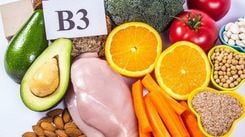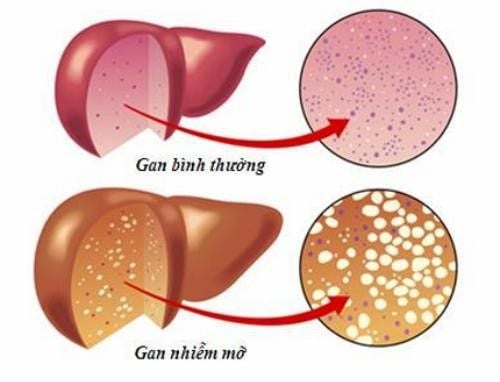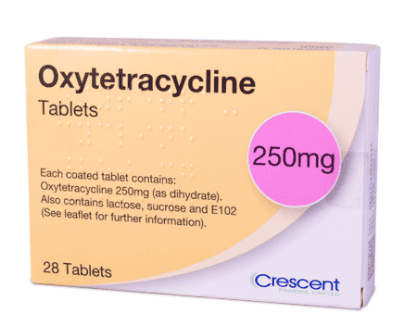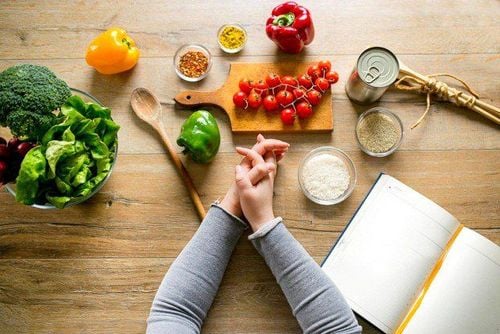Sucrose, glucose, and fructose are three common types of sugars found in natural products such as fruits, vegetables, dairy derivatives, grains, and processed foods. Despite all being classified as sugar, they differ significantly in their chemical structure, how the body processes them, and their impact on health.
1. Sucrose is composed of Glucose và Fructose
Sucrose is the scientific term for table sugar. Sugar is categorized into monosaccharides and disaccharides. Disaccharides are made up of two monosaccharide molecules bonded together, which can be decomposed back into monosaccharides during digestion.
The two monosaccharides, that are constituents of sucrose, are called glucose and fructose. Sucrose is a type of carbohydrates, naturally found in fruits, vegetables, grains, and in processed foods like candy, ice cream, breakfast cereals, sodas, and sugary drinks. Sucrose in processed foods is often extracted from sugarcane or sugar beets.
2. Glucose
Glucose is a monosaccharide and the primary source of energy for the body. Monosaccharides are singular sugar molecules that cannot be broken down further. They serve as the building blocks of other complex carbohydrate compounds.
In food, glucose is often bonded to other monosaccharides to form polysaccharides or disaccharides such as sucrose and lactose. It is commonly added to processed foods as dextrose, which is derived from corn starch. Perceived flavor of glucose is less sweet than both fructose and sucrose.
3. Fructose
Fructose, commonly known as fruit sugar, is another monosaccharide similarly to glucose. It is found naturally in fruits, honey, and many vegetables. This simple sugar is often added to processed foods in the form of corn syrup. Fructose is mainly extracted from sugarcane, sugar beets, and corn.

4. How are Sucrose, Glucose and Fructose digested and absorbed differently?
Our body processes monosaccharides and disaccharides in different ways. Since monosaccharides are already in their simplest form, they don’t need further decomposition and are absorbed directly into the bloodstream, primarily in the small intestine.
In contrast, disaccharides like sucrose must first be broken down into simpler sugars before they can be absorbed into the bloodstream. Here’s how each type of sugar is metabolized:
- Glucose Absorption and Usage:
Glucose is absorbed directly via the enterocytes lining of the small intestine into the bloodstream and transported to the cells. This event raises the blood sugar levels faster than other sugars, and stimulates the release of insulin, a type of hormone.
Insulin helps glucose enter cells. Inside the cells, glucose is either metabolized immediately for energy or stored as glycogen for later use.
The body can systematically regulate your blood glucose levels. When blood glucose is relatively depleted from energy use, glycogen is broken down into glucose and released into the bloodstream. If glucose or stored glycogen is not readily available, the liver can also create glucose from other sources.
- Fructose Absorption and Usage:
Similarly to glucose, fructose is absorbed directly into the bloodstream from the small intestine. However, fructose raises blood sugar more slowly than glucose, as such has negligible impact on insulin levels.
However, even if fructose does not have a drastic effect on blood insulin levels, it poses a negative long term effect on the body, Specifically, fructose must be processed by the liver, where it is converted into glucose or stored as fat. Excessive fructose consumption can overwhelm the liver, contributing to metabolic syndromes, and non-alcoholic fatty liver disease (NAFLD).
- Sucrose Absorption and Usage:
As a disaccharide, Sucrose must first be broken down into glucose and fructose before it is absorbed. This process starts with salivary enzymes in the mouth, where the carbohydrate is ingested. However, the majority of sucrose is processed in the small intestine, where the enzyme sucrase is secreted by the small intestine’s lining. The enzyme catalyzes the splitting of sucrose into glucose and fructose, which are then absorbed into the bloodstream.
The presence of glucose enhances fructose absorption and further stimulates insulin release. As such, the consumption of fructose and glucose together can be detrimental to your health. This explains why added sugar products, such as high-fructose corn syrup, are associated with various health concerns.
In summary, glucose and fructose are absorbed directly into the bloodstream, while sucrose must be broken down into simple sugars first. Glucose can be used for immediate energy conversion or stored as glycogen, while fructose is converted into glucose or stored as fat.
5. Fructose: The Least Beneficial for Health
Although fructose can be metabolized into glucose by the liver for energy conversion, consumption of fructose in excess can overwhelm the liver and disrupt the metabolization of other essential nutrients or biochemical reactions by the liver. Consequently, this could lead to disruption of the body’s physiological function.
In addition, consuming too much fructose can cause pathologic conditions such as insulin resistance, type 2 diabetes mellitus, obesity, fatty liver disease, metabolic syndrome, addiction, and other negative health effects.
6. How to Limit Sugar Intake?
It’s important to limit added sugars, however it is unnecessary to avoid natural sugar found in but natural sugars found in whole foods like fruits, vegetables, and dairy. These natural products do not pose the same risks, as they come with fiber, water, and nutrients that counteract any harmful effects of their sugar content.
Sugar only becomes a problem when excessive added sugar is consumed daily in the typical Western diet. A survey in the United States found that the average citizen consumes 82 grams of added sugar daily, comprising approximately 16% of their total calories intake, far above the recommended amount.
The World Health Organization advises that added sugar should make up no more than 5-10% of daily caloric intake. Or hypothetically, for a 2,000-calorie diet, it is recommended that you should limit the amount of added sugars to 25–50 grams per day.
Moreover, added sugar can exist in condiments such as sauces, dressings, and other products which are often oversighted. As such, it is important to read ingredient labels carefully.
Alarmingly, sugar can also be listed under more than 50 different names by food companies. Hence, he most effective way to reduce sugar intake is to consume whole, unprocessed foods and limit processed and packaged products.
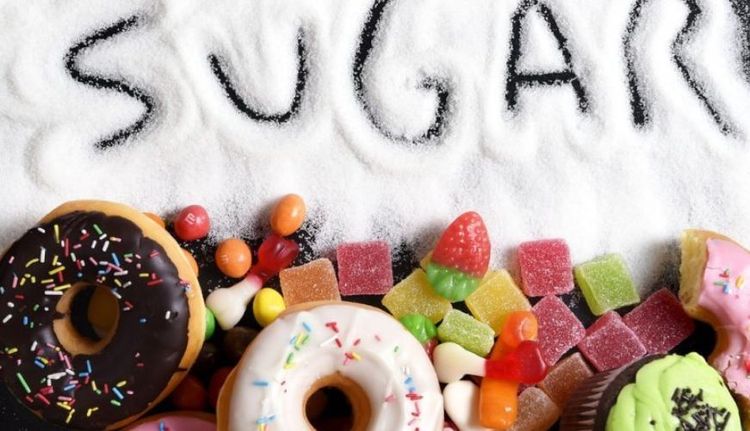
7. Conclusion
Glucose and fructose are simple sugars that the body readily absorbs, while complex sugars like sucrose must be broken down first. While fructose is the least beneficial to health, experts agree that it is important to refrain from consuming any type of sugar in excess, even if natural sugars from whole foods like fruits and vegetables are generally safe.
As such, to maintain a healthy diet, consumption of whole and unprocessed food should be prioritized whenever possible while adapting to a modest use of added sugar.
Please dial HOTLINE for more information or register for an appointment HERE. Download MyVinmec app to make appointments faster and to manage your bookings easily.



